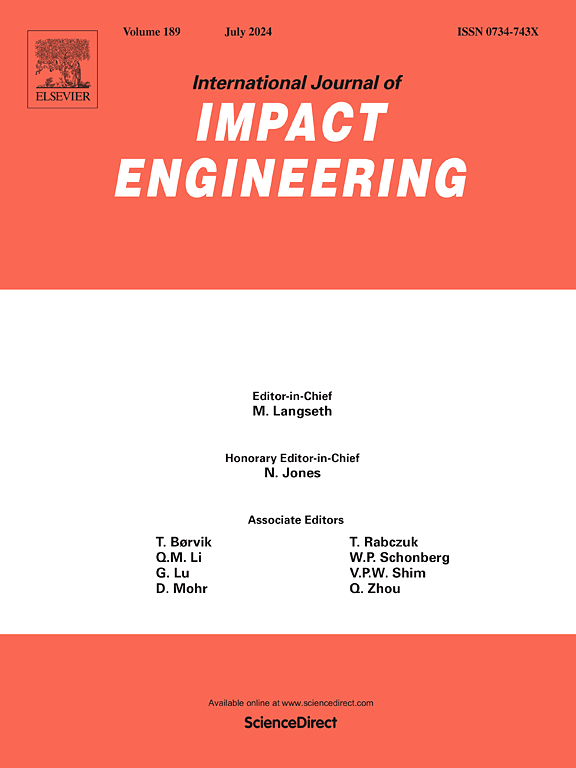不变性在有限相似标度理论中的作用
IF 5.1
2区 工程技术
Q1 ENGINEERING, MECHANICAL
International Journal of Impact Engineering
Pub Date : 2025-05-12
DOI:10.1016/j.ijimpeng.2025.105383
引用次数: 0
摘要
在公开文献中出现了一种新的尺度理论,称为有限相似,它提供了无限数量的新的相似规则,原则上可以适应所有的尺度效应。理论在实验中的实际应用的一个困难是(在缺乏支持分析的情况下)只有低阶相似规则是可行的,因为缩放实验的数量必然随着规则的顺序而增加。尺度分析不受相同程度的限制,但仍然有必要确定依赖于单个参数(长度标量β)的显式尺度函数。获得这些标度函数的一种方法是在仔细研究的物理系统中瞄准不变量。所有的尺度不变性都可以作为目标,例如长度、面积和体积的几何度量,以及长度-时间、面积-时间和体积-时间的时空度量。重要的运动学参数,如速度(如声、光)和加速度(如重力)也可以作为目标,包括材料特性(如粘度)和重要的场(如速度、应力)。本文的重点是研究不变性对有限相似理论的作用和重要性,目的是提供对可用的可能选择的见解。虽然这里的重点是尺度下的连续介质力学,但微观结构的不变性也经常出现。在固体力学中提出了一些涉及准静态和动态裂纹扩展的案例研究,以证明该方法在尺度分析中的作用和好处。本文章由计算机程序翻译,如有差异,请以英文原文为准。
The role of invariance in the finite similitude scaling theory
A new scaling theory has appeared in the open literature called finite similitude, which provides an infinite number of new similitude rules that can in principle accommodate all scale effects. A difficulty with the practical application of the theory in experimentation is that (in the absence of supporting analysis) only lower-order similitude rules are feasible since the number of scaled experiments necessarily increases with rule order. Scaling analysis is not constrained to the same extent but nonetheless it is necessary to determine explicitly scaling functions that depend on a single parameter (the length scalar ). One approach to obtaining these scaling functions is by targeting invariants in the physical system under scrutiny. All manner of scale invariances can be targeted such as geometric measures of length, area, and volume, along with space–time measures of length-time, area-time, and volume-time. Important kinematics parameters such as speed (e.g., acoustic, light) and acceleration (e.g., gravitational) can also be targeted including material properties (e.g., viscosity) and important fields (e.g., velocity, stress). The focus of this paper is to examine the role and importance of invariances to the finite-similitude theory with the aim of providing insight into the possible options available. Although continuum mechanics under scaling is the focus here, invariances from microstructural considerations can often arise. A number of case studies in solid mechanics are presented involving both quasistatic and dynamic crack propagation to demonstrate the reach and benefits of the approach in scaling analysis.
求助全文
通过发布文献求助,成功后即可免费获取论文全文。
去求助
来源期刊

International Journal of Impact Engineering
工程技术-工程:机械
CiteScore
8.70
自引率
13.70%
发文量
241
审稿时长
52 days
期刊介绍:
The International Journal of Impact Engineering, established in 1983 publishes original research findings related to the response of structures, components and materials subjected to impact, blast and high-rate loading. Areas relevant to the journal encompass the following general topics and those associated with them:
-Behaviour and failure of structures and materials under impact and blast loading
-Systems for protection and absorption of impact and blast loading
-Terminal ballistics
-Dynamic behaviour and failure of materials including plasticity and fracture
-Stress waves
-Structural crashworthiness
-High-rate mechanical and forming processes
-Impact, blast and high-rate loading/measurement techniques and their applications
 求助内容:
求助内容: 应助结果提醒方式:
应助结果提醒方式:


